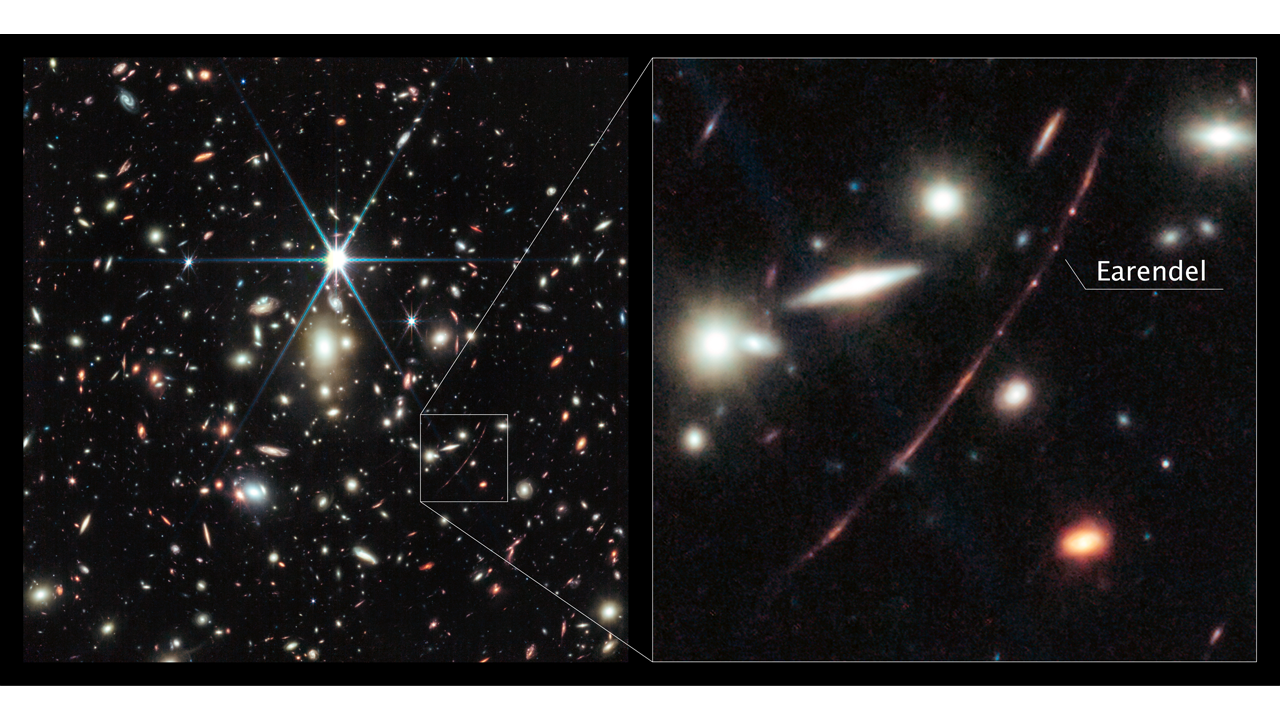This blog is old news. Not because it comes from a NASA release of three whole days ago, but because the star in question is pictured as it appeared 12.9 billion years ago, and it has long since gone kerplooey. We should've set a push alert.
The star named Earendel was discovered last year by the Hubble Space Telescope, which must have been very proud of itself for being useful even after the launch of the newer, fancier Webb Telescope. But it took the Webb to get clearer pictures on a wider spectrum of light, so we can actually start to know something about the star beyond that it exists.
That we know it exists is already pretty incredible. This sucker formed less than a billion years after the birth of the universe, but despite said birth being about 13.8 billion years ago, Earendel is 28 billion light years away from Earth. This is possible because the universe itself is ever expanding, and its expansion is constantly speeding up, a fact we weren't aware of until just 25 years ago. Normally, we wouldn't be able to detect light from a star this distant. But there's a galactic cluster in between us and it, bending space itself to form a perfect lens to magnify Earandel for us by as much as 40,000 times. The lensing is so intense that the galaxy to which Earandel belongs appears to us as a long, thin arc.

The Webb Telescope, NASA announced this week, has already learned two cool things about Earandel. The first is that the most distant star might actually be two stars—the team "think[s] they see hints of a cooler, redder companion star." This would not be a huge surprise, as most big stars like Earandel are part of binary star systems, where two stars orbit each other. The mechanism isn't totally understood, but there are physical reasons why binary systems form (or ternary; though a third large star is invariably ejected from the system before too long).
The second cool thing we know about Earandel is that it's big, and hot, and gone. It's a B-type star, which if you'll consult a handy stellar classification chart will tell you that it's twice as hot as our Sun, up to 100 times as massive, and about one million times as luminous. There's a thing about stars this big though: they blow up, and quickly. Earandel almost certainly went supernova within a few million years of its birth. We're seeing the light of a star that hasn't existed for more than 12 billion years. I think that's rad.
Now I suppose we have to talk about the name Earandel, which, if you're a certain kind of nerd (not the same as the space kind of nerd, though I suspect there's a lot of overlap), fired some neurons in your brain when you first read it. Earandel is Old English for "morning star." Eärendil is a character from Tolkien's Silmarillion, a half-elven mariner who carried a jewel called the Morning Star as he sailed across the sky. Tolkien, a lifelong philologist, knew what he was doing when he picked the name. So did the NASA scientists who discovered this star; they confirmed it's a Tolkien reference. But the actual etymology works well too. "It means the dawn star, and it's an Old English word. It's lovely. And this is a star, literally, from the dawn of time, the dawn of stars forming," NASA astronomer Michelle Thaller said. "This is the first star, the farthest star we've ever seen."






